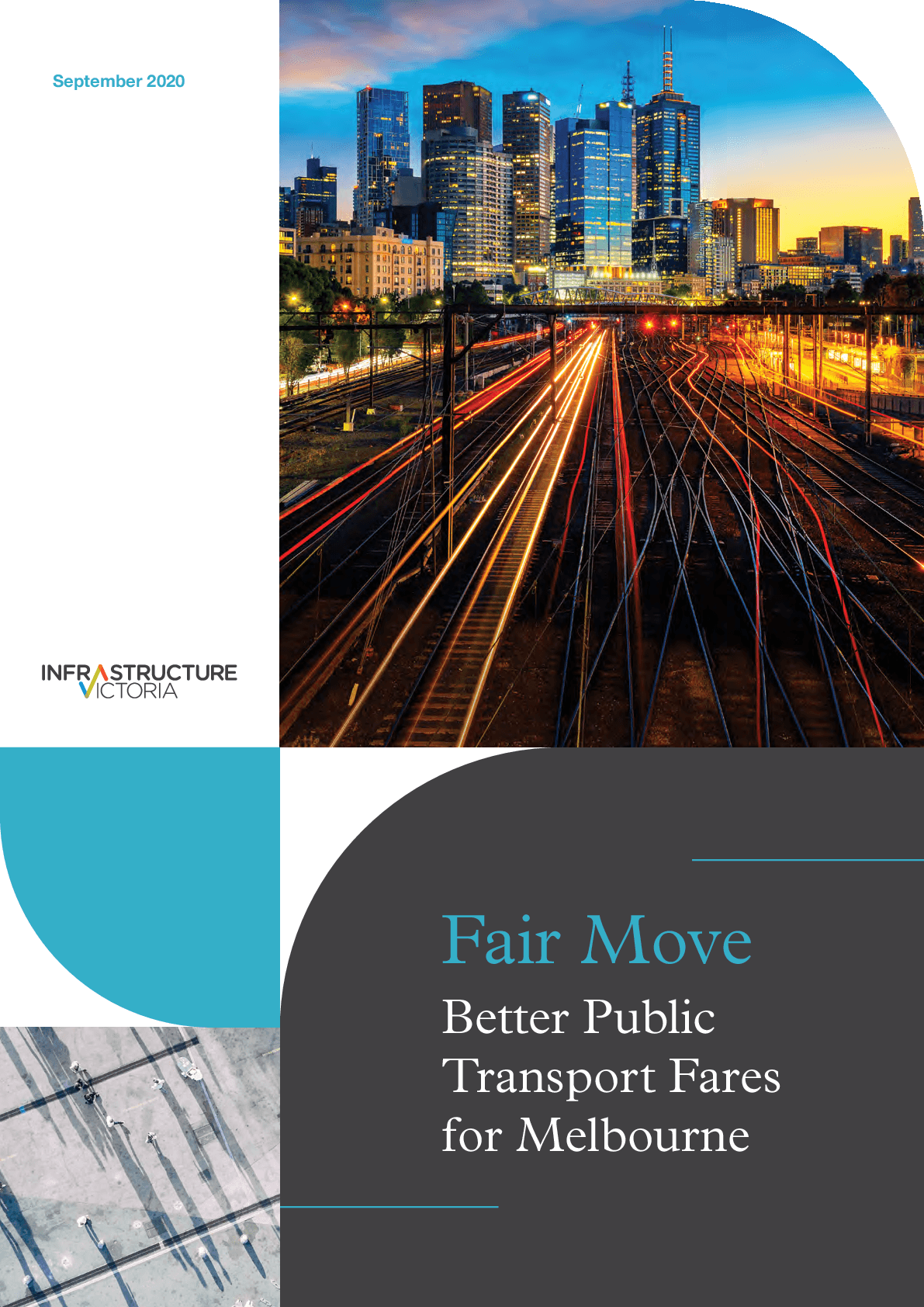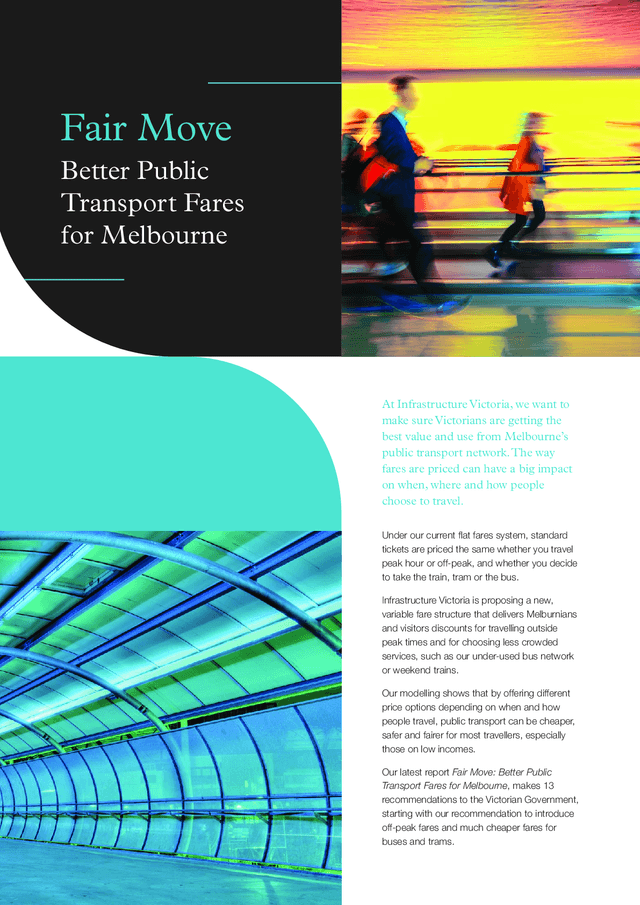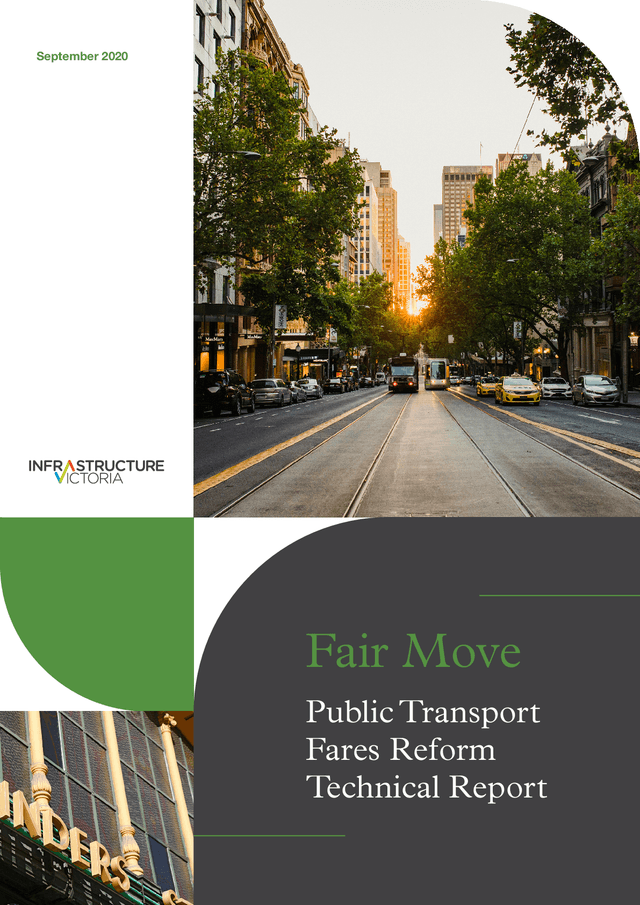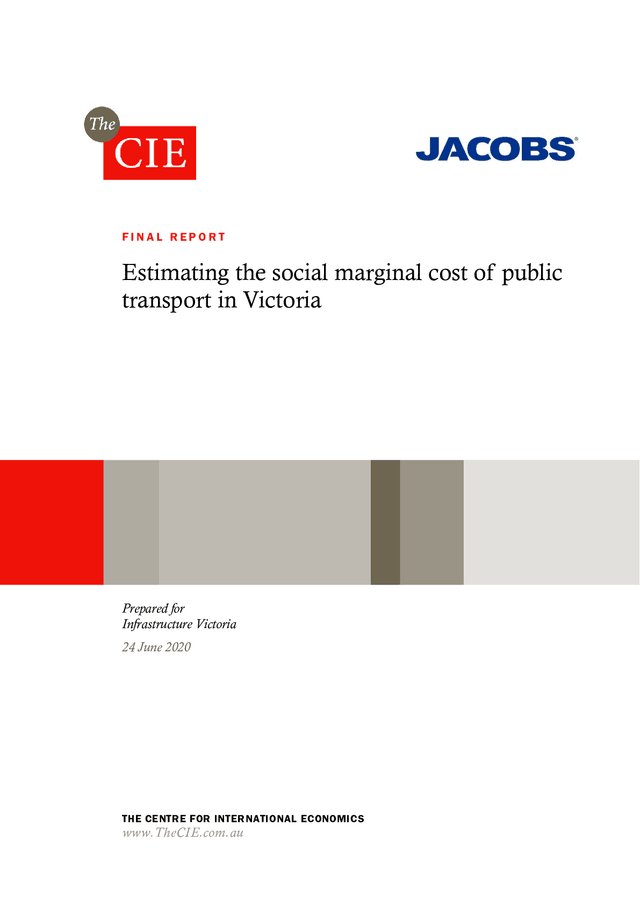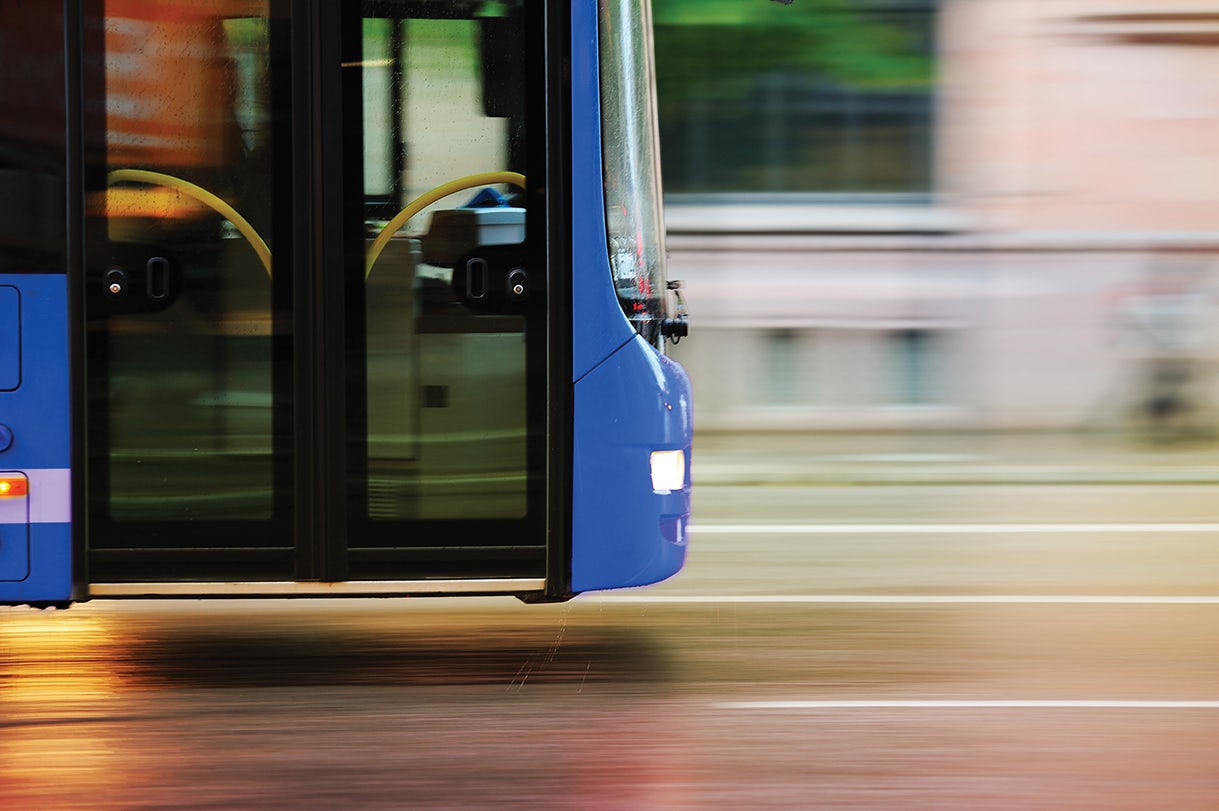Better public transport fares for Melbourne
In this report, we model a fare structure that gets the most out of Melbourne's public transport. Travellers would pay less for off-peak or under-used services, such as buses.
We examine the challenges facing the network - crowded at times and under-used at others. Flat fare prices are unfair and do not offer much choice about when to travel.
We can address network challenges with different fare price options, depending on when and how people travel.
Key findings
Our modelling shows fare reform can make public transport cheaper, safer and fairer for most travellers. Up to 71% of Melburnians would pay less than they do today. Low income households would benefit the most - saving up to 26%.
Fare reform would generate about $520 million in value each year for Victorians. Benefits include more transport price options, reduced crowding and congestion and lower pollution.
Our 13 recommendations would:
- increase public transport use with over 56,000 new users on a typical weekday
- take over 96,000 car trips off Victorian roads
- cut greenhouse gas emissions by 78,000 tonnes per year
- reduce crowding on busy train services with 30,000 fewer boardings during peak times
- increase off-peak public transport use with over 100,000 new boardings.
Recommendations: improve how fares are set
- Set public transport fares transparently, using clearly defined objectives.
- Fare setting objectives should make the best use of the public transport network, take equity into account and ensure peoplecan make informed travel choices.
- Immediately appoint an independent body to advise on and monitor transport prices.
Recommendations: fares that reflect the mode of travel
- Immediately introduce different fares on each public transport mode to reflect their different costs and benefits and to encourage their best use.
- Abolish the free tram zone to improve safety and access for those who need it most.
Recommendations: fare that reflect the time and place of travel
- Immediately introduce peak and off-peak fares on public transport in places and locations which are at capacity. Modes and zones which are rarely at capacity should have all-day off-peak fares.
- Consider a new `City Zone’ with its own peak price composed of the City Loop service train stations (Parliament, Melbourne Central and Flagstaff, Southern Cross and Flinders Street) and the Metro Tunnel stations (Arden, Parkville, State Library, Town Hall and Anzac). This City Zone would be subject to a specific peak price. Introduction should be contingent on city public transport travel patterns returning to pre-COVID-19 levels, with significant crowding during peak times.
- Introduce directional pricing so that trips in counter-peak directions are not charged a peak fare (such as, travelling away from the city in the morning peak).
Recommendations: ticketing that supports reform
- Discontinue myki Passes (unlimited travel over a specified time period for a fixed fee) to allow fare reform and remove complexity.
- Review the level of the daily fare cap when using myki Money.
- Open up the ticketing system to third parties. Third parties should be enabled to hold accounts for purchasing travel on behalf of travellers, including for Mobility as a Service.
- Make the ticketing system easier to use for Victorians and visitors by:
- reducing or removing the myki card purchase fee
- allowing other inputs for validation through an account-based system (such as credit and debit cards).
- Develop a set of principles to guide concession design, followed by a review of all discounts, removing or adding concessions as necessary.
